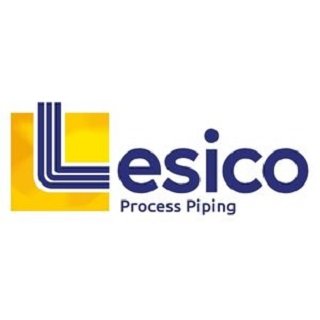OSM Manufacturing: Revolutionizing Construction with Off-Site Methods
Revolutionizing Construction with Off-Site Methods

The construction industry has seen significant advancements over the years, with new techniques continually shaping how projects are conceptualized, managed, and executed. One of the most transformative methods gaining traction is Off-Site Manufacturing(OSM), a process where building components are manufactured away from the final construction site, only to be assembled later. Known for improving efficiency, quality, and cost-effectiveness, OSM manufacturing has quickly become essential for modern construction, particularly in sectors like healthcare, commercial spaces, and residential complexes.
This blog will explore the core concepts, benefits, types, and future of OSM manufacturing, shedding light on why this approach is set to play a central role in the future of the construction industry.
What is OSM Manufacturing?
OSM manufacturing is a construction method where various building components, like walls, floors, modules, and even entire rooms, are manufactured in a controlled environment away from the construction site. These components are then transported to the site for final assembly. The process differs from traditional construction, where each element is built directly on-site, often leading to prolonged project timelines and inconsistent quality due to environmental factors.
The controlled factory environment in OSM ensures higher precision, minimizes wastage, and drastically reduces the construction period. This manufacturing process is advantageous in urban settings where space is limited, labor is expensive, and the demand for rapid project completion is high.
Key Types of OSM Manufacturing
OSM manufacturing is not a one-size-fits-all approach. Different types of OSM cater to varying needs within the construction industry, providing flexibility and adaptability for a range of projects.
- Component Sub-Assembly
- In this method, individual components such as walls, panels, and trusses are manufactured off-site. These sub-assemblies are later transported and assembled on-site, allowing for faster and more streamlined construction. This approach is ideal for residential and small commercial projects where individual components need customization.
- Non-Volumetric Pre-Assembly
- Here, flat panels or structural elements are manufactured and transported to the site for assembly. This method is cost-effective and particularly suitable for projects with a repetitive structure, like multi-family housing.
- Volumetric Pre-Assembly
- Volumetric pre-assembly involves creating entire modules, such as bathrooms or hotel rooms, which are later connected on-site. This type of OSM is particularly popular in the hotel and hospital industries where uniformity and consistency are essential.
- Modular Construction
- Modular construction is perhaps the most well-known type of OSM, involving the off-site manufacturing of complete units or modules. These modules are transported and assembled on-site, drastically reducing construction time. This method is perfect for large-scale projects like apartment buildings, hospitals, and educational facilities.
Each type of OSM offers unique benefits and is chosen based on the project requirements, timeline, and budget.
Benefits of OSM Manufacturing
The rapid adoption of OSM manufacturing in the construction industry is primarily due to the array of benefits it offers. Let’s explore some of the key advantages of using OSM in construction.
- Reduced Construction Time
- By manufacturing components off-site and assembling them on-site, OSM can reduce project timelines by up to 50%. This speed-to-market advantage is particularly useful in sectors where construction delays can have substantial financial impacts, such as retail, hospitality, and healthcare.
- Higher Quality Control
- OSM allows for better quality control since manufacturing takes place in a controlled factory environment. Unlike on-site construction, which can be affected by weather conditions, labor fluctuations, and logistical challenges, OSM components are crafted under stringent conditions, ensuring precision and consistency.
- Cost Efficiency
- Due to reduced labor, faster construction times, and minimized material wastage, OSM can significantly cut project costs. This cost-effectiveness makes it an appealing option for both small and large-scale projects, especially in regions where labor is costly.
- Environmental Benefits
- The controlled environment of OSM facilities minimizes material wastage, energy consumption, and emissions, leading to a more sustainable construction process. OSM aligns with green building practices and helps organizations meet environmental standards, a growing priority in today’s construction sector.
- Enhanced Safety
- With a large portion of the work happening off-site, the risk of on-site accidents is reduced. This approach creates a safer environment for workers and reduces the need for extensive on-site safety protocols, which can be both costly and time-consuming.
- Labor Optimization
- OSM requires fewer on-site laborers, which is beneficial in regions facing a shortage of skilled construction workers. The work is carried out by trained personnel in manufacturing facilities, reducing dependency on traditional construction labor and promoting job creation within the manufacturing sector.
Industries Benefiting from OSM Manufacturing
The flexibility and efficiency of OSM manufacturing make it suitable for a wide range of industries. Here are some of the sectors most significantly impacted:
- Healthcare
- In healthcare, where timely construction can have life-saving impacts, OSM manufacturing offers speed and precision. Modular units for hospitals, clinics, and diagnostic centers can be constructed off-site and assembled on-site, providing cost-effective solutions for healthcare providers.
- Education
- With increasing demands for schools and learning spaces, OSM enables the rapid construction of classrooms and dormitories. Modular classrooms can be added to existing campuses or constructed as standalone units, catering to the rising need for educational infrastructure.
- Hospitality
- The hospitality industry benefits from OSM’s ability to create identical hotel rooms, suites, and amenities that ensure brand consistency. With OSM, hotels can expand quickly and maintain quality, essential in a highly competitive market.
- Residential
- For residential projects, especially in urban areas, OSM allows developers to build quickly, reducing labor costs and meeting housing demands. Affordable housing projects, in particular, leverage OSM to provide cost-effective solutions to low-income populations.
- Retail
- OSM is ideal for the retail sector, allowing brands to quickly set up new stores and expand their market presence. Retail modules can be manufactured and assembled quickly, minimizing the downtime associated with traditional construction.
Challenges and Future of OSM Manufacturing
While OSM manufacturing is highly advantageous, it also comes with its own set of challenges:
- Transportation and Logistics
- Transporting large prefabricated components from the manufacturing facility to the construction site requires careful planning, especially for projects in urban areas or remote locations.
- Design Limitations
- OSM relies on standardized components, which can sometimes limit design flexibility. Architects and engineers must work within these parameters, which may not suit projects requiring highly customized designs.
- Regulatory Compliance
- Navigating building codes and regulations for OSM components can be complex, as different regions may have specific requirements for off-site construction.
- Initial Costs
- While OSM reduces costs in the long run, it requires a significant upfront investment in manufacturing facilities and equipment. Smaller construction firms may face financial constraints in adopting this technology.
The Future Outlook of OSM Manufacturing
Despite these challenges, the future of OSM manufacturing is promising. Advances in robotics, automation, and AI are likely to enhance the precision and efficiency of OSM facilities, further driving down costs. As sustainability and green building practices become more critical, the construction industry is expected to lean heavily toward OSM to reduce its carbon footprint.
Furthermore, increased collaboration between architects, engineers, and OSM manufacturers can lead to innovative designs that balance creativity with efficiency. As urbanization intensifies, particularly in Asia and Africa, the demand for fast and cost-effective construction solutions will propel OSM into mainstream adoption.
Conclusion
OSM manufacturing is more than just an alternative to traditional construction; it’s a transformative approach reshaping the industry. From enhanced quality control to faster project completion and environmental sustainability, OSM offers solutions that address the many challenges of modern construction. As OSM technologies continue to evolve, this method stands to play a central role in meeting the needs of an increasingly urbanized and resource-conscious world.
For stakeholders in construction, now is the time to embrace OSM manufacturing and explore its potential to transform projects, one prefabricated module at a time.


